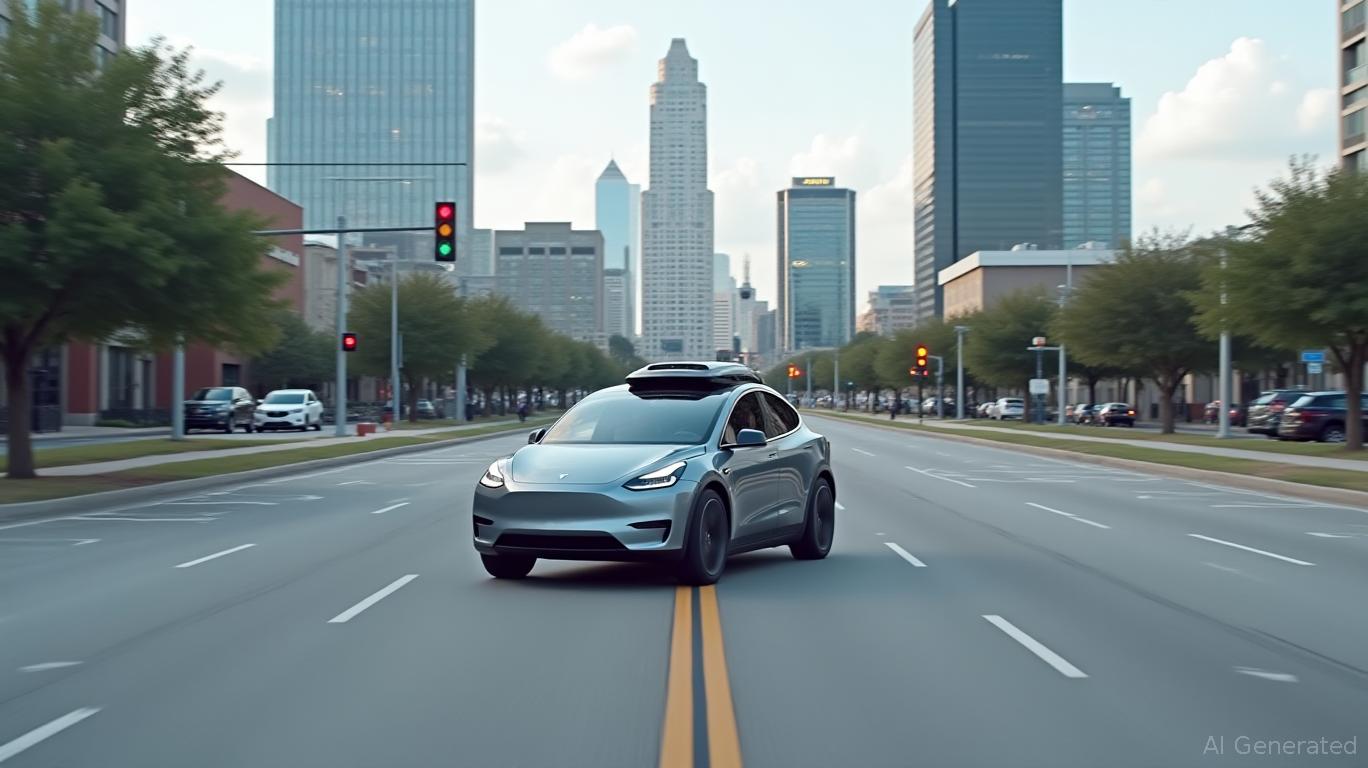Tesla's Robotaxi Launch: A Quantum Leap Toward Autonomous Dominance?
The clock is ticking on Tesla's bid to redefine transportation. On June 22, 2025, the company flipped the switch on its long-awaited robotaxi service in Austin, Texas—a move that could either cement its legacy as a tech disruptor or expose its overreliance on Elon Musk's bravado. Let me break down why this rollout isn't just about cars; it's about whether Tesla can finally turn Musk's “full self-driving” vision into a profit machine.

The Launch: A Small Step, a Giant Gamble
Tesla's Austin robotaxi service is intentionally small in scale. A mere 10–20 Model Ys, geofenced to avoid the airport and limited to 16 hours daily, might seem underwhelming. But here's the key: this isn't a grand gesture to “wow” the public. It's a controlled experiment to test the viability of autonomous ride-sharing at scale. The $4.20 flat fare and Early Access program targeting retail investors and influencers are smart plays to build hype and loyalty.
Critics will pounce on the use of geofencing—a tool Musk once called “cheating”—and the presence of remote monitors. But let's get real: every autonomous tech pioneer, from Waymo to Cruise, starts with constraints. The question isn't whether Tesla's system is perfect today, but whether it's on a path to perfection. And the data suggests progress: 444 miles between critical failures is a meaningful leap from earlier metrics.
Why This Matters: Tesla's $2 Trillion Play
Tesla's robotaxi isn't just a car; it's a cash-generating platform. Imagine a fleet of vehicles that operate 24/7, with no human drivers to pay. Analysts project this could push Tesla's market cap to $2 trillion by 2026—a number that hinges on three things: software monetization, regulatory approval, and execution.
The Austin rollout is validation that Musk's “Hardware 4 + software stack” strategy works. The custom Austin-optimized software, paired with teleoperation as a failsafe, shows Tesla isn't reckless. It's methodical. Even with Texas lawmakers pushing for delays, Tesla pressed ahead—a bold move signaling confidence.
The Risks: Musk's Track Record vs. Market Reality
Let's not sugarcoat it. The risks here are enormous. The Dawn Project's findings about Tesla's FSD software failing to stop for school buses are damning. Regulators could still yank the plug, and Musk's habit of missing deadlines (remember the 2016 “fully autonomous” promise?) hasn't faded. Meanwhile, Waymo is already logging 250,000 weekly rides in Austin—a head start Tesla must overcome.
But here's where I lean bullish: the stock's 1.8% pop post-launch isn't a fluke. Investors are buying into the long game. Even with Tesla down 20% year-to-date, the robotaxi's existence proves Musk isn't just talking about autonomy—he's building it. For now, the market is pricing in future upside, not today's flaws.
The Cramer Verdict: Buy the Dip, but Keep an Eye on the Road
This isn't a “buy now, sell tomorrow” play. Tesla's robotaxi is a multiyear bet, and the road ahead is littered with potholes. But here's the kicker: no one else is moving faster. Ford's Blue Cruise? Still needs a human driver. GM's Cruise? Still in beta. Waymo's ahead in scale but lacks Tesla's brand and vertical integration.
My advice? Own Tesla for the long haul, but stay disciplined. Set a price target at $300–$350 (up from today's ~$240) and be ready to average down if the stock stumbles. The risks are real, but the upside—a world where Tesla's cars drive themselves to work, school, and errands—is too big to ignore.
In the end, this isn't about perfection. It's about progress. And on June 22, Tesla took a step forward. The question now is: will the market reward the journey? I'm betting it will.
Stay tuned—this ride isn't over yet.

Comments
No comments yet